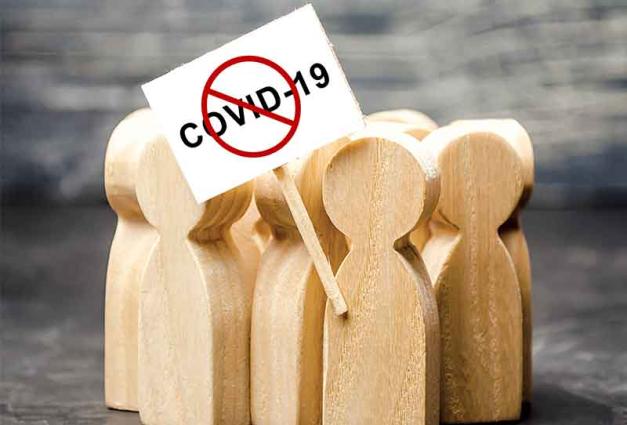With Americans as young as 12 years old now eligible to receive the COVID-19 vaccine, government officials are racing to convince as many people as possible to get a shot.
Four SPSP members shared key insights from behavioral science during a White House COVID-19 briefing in March, coordinated by the Behavioral Science & Policy Association, in order to help the Biden Administration increase uptake of the COVID-19 vaccine.
Roughly 48 percent of Americans have received at least one vaccine dose as of May 18, according to the Centers for Disease Control and Prevention (CDC). Throughout the rollout, hurdles to vaccination have included hesitancy, lack of follow-through, and long-standing inequities that make it more difficult for some communities to receive the vaccine.
Speaking with members of President Joe Biden’s COVID-19 team and leaders from the U.S. Department of Health and Human Services (HHS), the following SPSP members tackled these challenges and recommended evidence-based interventions informed by personality and social psychology.
Katy Milkman, a professor at the Wharton School of the University of Pennsylvania, presented research focusing on people who intend to get vaccinated but do not follow through. In order to close this gap, Milkman recommended assigning people vaccinations that are easy to reschedule and prompting people to plan the date and time of their vaccination, if appointments cannot be assigned.
She also explained that telling a person that a shot is “reserved” for them can make them more likely to get vaccinated. Milkman led a megastudy that included over 700,000 participants, which aimed to design text messages that affectively nudged people to accept flu vaccines. She noted that telling a people a vaccine is “reserved” for them can frame vaccination as a default.
“When vaccination is framed as a default, we may presume we’ll face less hassle getting our shot, that everyone else is getting vaccinated too, and that vaccination is recommended,” said Milkman.
Historical and contemporary inequality can also undermine trust in the vaccination process and make it more challenging for certain groups to get vaccinated. Neil Lewis, Jr., a professor in Cornell University’s Department of Communications, explained that responses to this problem should address to the structural and messaging needs of underserved communities, Lewis explained. During his presentation, Lewis shared an adaptive intervention that emphasizes the strengths of trusted community partners, government and scientists to improve equity in the vaccination process.
It is important, Lewis said, to continue assessing and addressing the needs of communities in real-time.
“The pandemic is not over,” Lewis said, “and the communities that have borne the brunt of it all continue to face disproportionate risks. We have to do whatever we can to mitigate those risks and improve equity in our response.”
The White House has employed these lessons through initiatives like the COVID-19 Community Corps, which provides clergy, community leaders and individuals with vaccine safety fact sheets and tips for discussing the vaccine with family and friends who may be skeptical to receiving a shot.
Polarization and partisanship have also been consistent challenges for those working to vaccinate as many people as possible. During his presentation, New York University Professor Jay Van Bavel explained that polarization could prove to be among the biggest barriers to reaching herd immunity. He discussed how social norms may help to address this challenge and noted that COVID-19 has been a polarizing issue since it emerged.
“Over a year later, we have now seen Republicans take the pandemic less seriously in terms of the risk assessments, mask wearing, physical distancing, and now vaccination attitudes,” Van Bavel said.
Stanford University Professor Robb Willer’s research also focuses on polarization, specifically examining how to increase vaccine intentions among Republicans. One in five Republicans do not want a COVID-19 vaccine, according to the Kaiser Family Foundation. Willer’s research notes that pro-vaccine messaging from Republican leaders were helpful in increasing not only intentions to encourage others to vaccinate, but also actual vaccine intentions.
“This finding suggests a couple different ways to intervene productively to promote vaccination among Republicans,” Willer said. “It would be helpful for Republican politicians to build their own high profile vaccine promotion campaign. Second, even if they will not, organizations like AdCouncil can build public service announcements from existing video of Republicans getting vaccinated and promoting vaccination, and these PSAs would likely be effective.”
In the days after the briefing, the Biden Administration launched a public relations campaign that specifically targets conservative audiences. The effort includes partnering with the American Academy of Country Music on public service announcements featuring well-known musicians that are set to run through the summer.
Attitudes toward the COVID-19 vaccine are ever-changing and social psychologists will need to monitor the situation in order to provide useful guidance to those managing the rollout process. Lewis recently explained that the landscape has shifted in some ways since their White House briefing.
“The methods needed to increase uptake have changed somewhat since March; back then we made a lot of progress with putting mass vaccination sites in the right places and deploying mass messaging campaigns,” Lewis said. “Right now, it is looking like we will need more hyperlocal and deeply tailored strategies to reach those who have not yet received their vaccines.”
We applaud SPSP members Katy Milkman, Neil Lewis, Jr., Jay van Bavel, and Robb Willer for sharing their research and offering their expertise during the conversations that will shape the ongoing vaccine rollout.




